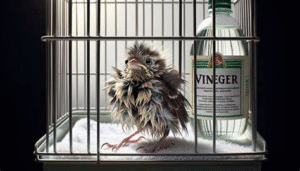As a loving dog owner, you’re familiar with all the unique scents that come with your canine companion, from puppy breath to the smell of wet fur after a rainy walk. However, if you catch an unusual or foul odor coming from your dog’s ears, it’s more than just a hygiene quirk—it’s one of the clearest signals your dog can give you that something is wrong.
Healthy dog ears shouldn’t have a strong smell. A faint, slightly earthy scent might be normal, but a pungent, yeasty, or foul odor is a red flag for an underlying health issue. Think of it as your dog’s way of communicating discomfort. This smell is often the first and most noticeable symptom of common problems like infections, inflammation, or trapped foreign material. Paying close attention to this scent is a crucial part of proactive pet care. By investigating the cause of a smelly ear, you can catch potential problems early, preventing them from becoming more painful and serious for your furry friend. An ear infection is one of the most common reasons pet parents seek veterinary care, and noticing the odor is the first step toward getting them the help they need.
Uncovering the Culprits: 4 Common Causes of Smelly Dog Ears
Several issues can lead to smelly ears. Here are the most common culprits:
- Yeast Infections: A yeasty, sweet, or musty smell often points to a yeast infection, which thrives in the warm, moist environment of a dog’s ear canal.
- Bacterial Infections: These can produce a more foul or pungent odor and are often accompanied by a yellow or greenish discharge.
- Ear Mites: These tiny parasites create a dark, crumbly discharge that resembles coffee grounds and can have a distinctly unpleasant smell.
- Trapped Debris or Allergies: Excess moisture, wax, or foreign objects like grass seeds can get trapped in the ear, leading to irritation and odor. Allergies can also cause chronic inflammation that leads to secondary infections.
When to See a Vet: Warning Signs You Shouldn’t Ignore
While a smell is a key indicator, other symptoms warrant an immediate trip to the vet. Look out for:
- Persistent head shaking or tilting
- Excessive scratching at the ears
- Redness or swelling of the ear canal
- Visible discharge (yellow, green, or black)
- Signs of pain, such as yelping when the ear is touched
- Loss of balance or hearing
Your Gentle Action Plan: How to Safely Clean Your Dog’s Ears at Home
If your vet has ruled out a serious infection, regular cleaning can help maintain ear health. Here’s how to do it safely:
- Gather your supplies: a veterinarian-approved ear cleaning solution and cotton balls or pads. Never use cotton swabs (like Q-tips), as they can push debris further into the canal and cause damage.
- Gently hold your dog’s ear flap up to straighten the ear canal.
- Squeeze the recommended amount of cleaning solution into the ear, and massage the base of the ear for about 30 seconds. You should hear a squishing sound.
- Let your dog shake its head. This helps dislodge wax and debris.
- Use the cotton balls or pads to gently wipe away any visible dirt and excess solution from the outer part of the ear.
Keeping Ears Fresh & Healthy: Simple Tips for Long-Term Prevention
Prevention is key to avoiding future ear problems. Incorporate these habits into your routine:
- Regular Checks: Check your dog’s ears weekly for any signs of redness, discharge, or odor.
- Keep Them Dry: After baths or swimming, gently dry the inside of your dog’s ear flaps as far as you can comfortably reach.
- Proper Grooming: For long-haired breeds, keep the hair around the ear canal trimmed to improve air circulation.
- Address Allergies: If allergies are the root cause, work with your vet to manage them effectively.
Check This : How to Choose the Best Dry Dog Food for Skin Allergies











